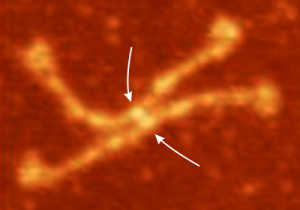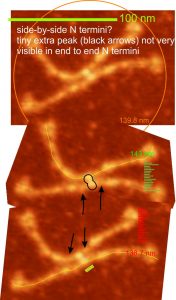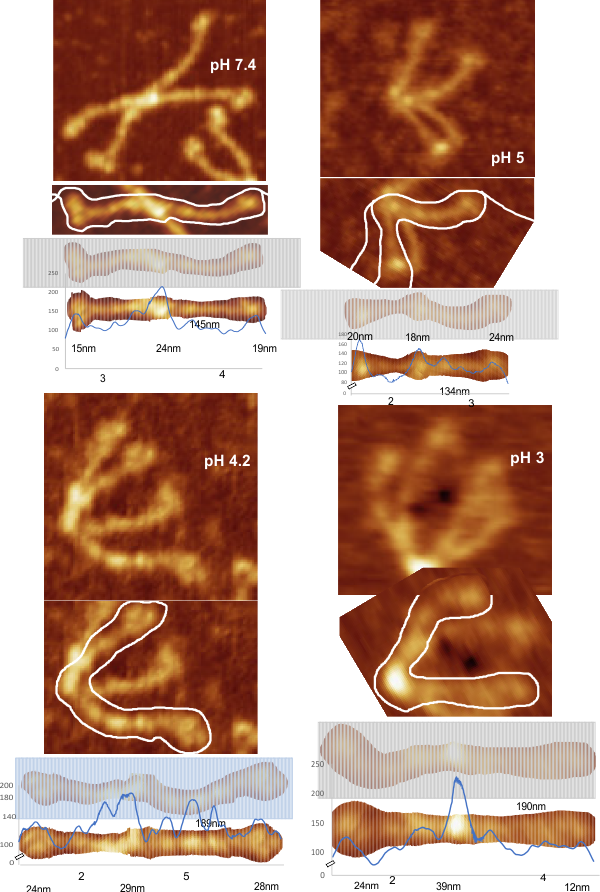made this counted cross stitch pattern of the coronavirus… find the pattern really cheap here, and help relieve some of your stress as you stitch it
Monthly Archives: March 2020
Verge of a Dream: Not life in the Time of cholera
As fast and far as you can
before laying flat
On the sand. As certain
As it is possible to be.
Tomorrow and yesterday
Are same as today.
Like the bird in the clock
On the hour you’re loved
On the half you are not.
Wishing to live in a
World I created.
Imagining it was
Not life in the
Time of cholera.
poem RLB 3/2020
image MM 3/2020 (best coronavirus pic around LOL)
we dont have smart politicians, smart healthcare providers, smart big pharma, or smart people…. this is a combined lesson in unpreparedness,–sorry bernie, sorry biden, sorry trump, sorry everyone….amen
Reposting from
Europe’s Coronavirus Fate Is Already Sealed
One reason Britain and Italy are struggling: Their medical systems are too dependent on government. by Joseph Sternberg.
Scientists around the world have worked overtime to get a handle on COVID-19, yet one great unknown remains. We still don’t know for sure whether this is only a medical crisis, or also a medical system crisis.
The distinction matters for the novel coronavirus for the same reason it matters for other “natural disasters” that aren’t entirely natural. It is now widely understood that famines arise from local political failures in the trade and distribution of abundant global food supplies, not from local crop failures. Floods devastate communities not because the local rivers are unusually watery but because poor zoning and subsidized flood insurance encourage people to build homes in flood plains.
This is the context for a conspicuous feature of COVID-19: It is not untreatable, but many health systems are struggling to deliver effective treatment. Nowhere is this more so right now than in Italy, where nightmarish reports are emerging from hospitals in the hardest-hit areas.
Doctors in Italy know what to do to treat severe cases, such as using ventilators in intensive-care units. But hospitals lack the beds and equipment for the influx of patients, and Italy doesn’t have enough doctors even to make the attempt. Ill patients languish in hospital corridors for want of beds, recovering patients are rushed out the door as quickly as possible, and exhausted (and sometimes sick) doctors and nurses can’t even muster the energy to throw up their hands in despair.
Is this more a result of the severity of COVID-19, or of long-term failures to invest in the Italian health-care system? One starts to suspect the latter.
Italy lags behind other large European countries in provision of acute-care hospital beds, furnishing 2.62 of them per 1,000 residents as of 2016, according to the Organization for Economic Cooperation and Development. In Germany it’s 6.06 and in France and the Netherlands it’s 3.15 and 3 respectively. That year, Italy devoted around $913 per capita to inpatient acute and rehabilitative care, compared with $1,338 in France, $1,506 in Germany, and $1,732 in the U.S.
U.K. policy makers understand what such analyses portend — because underinvestment in Britain’s creaking health-care system is even worse. The U.K. spent the princely sum of $901.70 per capita on acute care in 2016, according to the OECD. British data don’t distinguish acute-care beds, but a comparison of available beds overall isn’t any more favorable to the U.K. (or to Italy). In 2017, when Germany provided 8 beds per 1,000 residents and France offered 5.98, Italy managed 3.18, and the U.K. only 2.54.
As a result, British authorities have adopted a very specific policy goal in their approach to COVID-19. The aim is not to prevent the virus’s spread through the general population, which is a foregone conclusion. Rather, the name of the game is delay. British authorities are desperate to hold off on a mass outbreak until the socialized National Health Service has recovered from its chronic winter crisis.
That’s right, the NHS, which now will have to cope with a new and fast-moving respiratory illness, already falls to pieces every year with the normal ebb and flow of cold-weather ailments. Each winter crisis becomes a bit more acute, and this year was no exception. As of December, only 80% of emergency-room patients were treated within four hours of arrival, down from 84% in the depths of the previous two winters.
What accounts for these divergences in health-care resources requires more study than a single newspaper column can provide, but a few early hints emerge. One is the observation that the U.K. and Italy are significantly more dependent on direct government financing of health-care than is France or Germany.
Government accounted for 79% of total health-care spending in the U.K. in 2017, according to Eurostat, and 74% in Italy. Germany and France both rely on compulsory insurance schemes with varying degrees of subsidy and government meddling, but outright government expenditure amounts to only 6% of total health spending in Germany and 5% in France. COVID-19 in this sense is a test of how much one trusts central health planners to make wise long-term decisions that boost resilience in the face of unusual dangers.
This story is food for thought for voters inclined to skepticism over the wisdom or efficacy of their politicians’ responses to the crisis. Those same politicians already have made decisions that may seal a country’s coronavirus fate, and it won’t have anything to do with quarantines or restrictions on travel or large gatherings. Rather, the important choices may have already come in the guise of technocratic health spending and investment decisions made largely out of public view over many years. How lucky do Europeans feel?
A little similarity – made me laugh
This is a joke more or less, maybe less, but it speaks to a rhythm in “nature” all aspects thereof, that is pretty fun to see. One of my colleagues/friends/fellow emeriti (though he would choke if i used that terminology for the two of us since he has achieved mountains more that I did-or at least I am led to believe that) sent a graph of the Milankovitch cycles (the debate is global warming). I looked at the blue plot on that graph he sent and just laughed out loud…. Here in this image i am plotting what I am working on currently, and see how fun the two look beside each other. I am not assigning any purpose to this post, just laughing. 
SP-D dodecamer – side to side N-termini?
SP-D dodecamer with what looks like side to side N termini binding between two of the four hexamers.
Image from Arroyo et al. supplement Figure 4b. (I placed the arrows at the juncture of two sets of N termini from hexamers). The possible side to side N termini binding is more often seen in multimers but it looks pretty clear in this dodecamer.
Measuring the width of the much narrower N termini junction peak here also shows the LUT plots which identify a tiny peak before the largest peak (outside the N and C termini of the trimer). The tiny peak on either side of the side to side N termini association may be unique and it will be necessary to see whether the shoulder bump is actually part the LUT plots as seen in the most typical images, or if the N termini are side by side if actually in some cases a separate peak (as one can at least conjecture about here) is present on either side (black arrows). The width of the N termini peak is only 9 or 10 nm where when the N termini are joined side o side as seen here but much wider (like twice) when the N termini are joined end to end (typical) and that number of nm is posted a couple different places on this blog.


Little Demons
We are little demons
hiding over there
look and look and
you will find me
on the stair.
We are little demon
making sure you read
pH and SP-D collagen-like domain LUT peaks
No complaining here but sometimes it is hard to see progress in laborious tasks, and maintain forward momentum.
Case in point, trying to find out the number of “height” “brightness” “LUT” “grayscale” peaks in surfactant protein D.
The publication i have quoted the most is by Arroyo et al, and again it is here along with an assessment of four of their images
for peaks along the collagen like domain of the trimers. All the techniques previously employed to create easy to measure, to align, to adjust to a given-consensus-diameter, have been explored before in this blog, but this looks at other parameters. Arroyo et al subjected isolated hSP-D to different pH conditions and as I looked over the images i realized that pH apparently does not affect the presence of LUT peaks along the collagen like arm, thus i isolated, rotated, cut into 1mm slices and centered (horizontally) these images, and then subjected them to FIJI upversion of old ImageJ.
One of the good things about dicing and rotating and using two arms of the dodecamer is that one quickly realizes that there is relatively small effect of bounce, chatter, skipping, vibration in the plots of grayscale. In fact, in all these plots images taken at different angles to the trimeric arms, different magnifications, different resolutions, different HSL, different brightness, and contrast, and at least three different methods of sample preparation, and almost a half dozen different species/genotypes of SP-D really dont change the pattern of the LUT plots that much. That is consoling.
Image below has four images by Arroyo et al, and in each i have plotted a hexamer, and in each i have shown what processes i have used and given the visual peak number and shown the actual peaks created. In the 8 trimeric arms there is a mean of 3 peaks between the N termini and the CRD peaks. I have shown the nm measures for the N and CRD in each of the four samples.

Verge of a Dream: Momentary panic
In this momentary panic
comes that eternal
soulful aching
we know will come in
departing moments
left open for the taking
With expiration,
we say our “love you’s”
in throws of passion
and abandon while
hearts implode in some
cursed destructive fashion
i think this is by sara witt, about 2018
Verge of a Dream: Song of Love
No matter how difficult
it should be to lose you in
The muddle of thoughts
And images, tourmaline
So very blue, in
A diamond and
gold band guides
you back to me.
Though the swiftness of
A kiss you gave may be
out of reach,
being chased
as though it was
dust racing away
in a windblast.
In the puzzle that years
produces, I want you
again poised
before the keys
wishing the oracle
followed
The lines in my palm
And promised you’d play
A song of love
but only you and I
would hear.
RLB – 3/10/20
Stretchy is good when you are reaching for virus
Just thinking about the odd shapes that SP-D dodecamers (and all other trimers, hexamers, multimers etc) and the flexibility of the three molecules entwined built from collagen like sequences — that provides that long twined stretchy capacity of the SP-D arms, allowing the CRDs to “reach” for the spike proteins “peplomers” heterologous groups of proteins … I did not find the origin of that word but presume it is from peptide and the suffix “mer” or “mere” meaning group.

